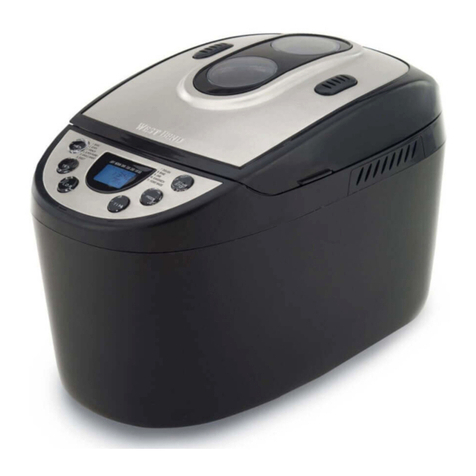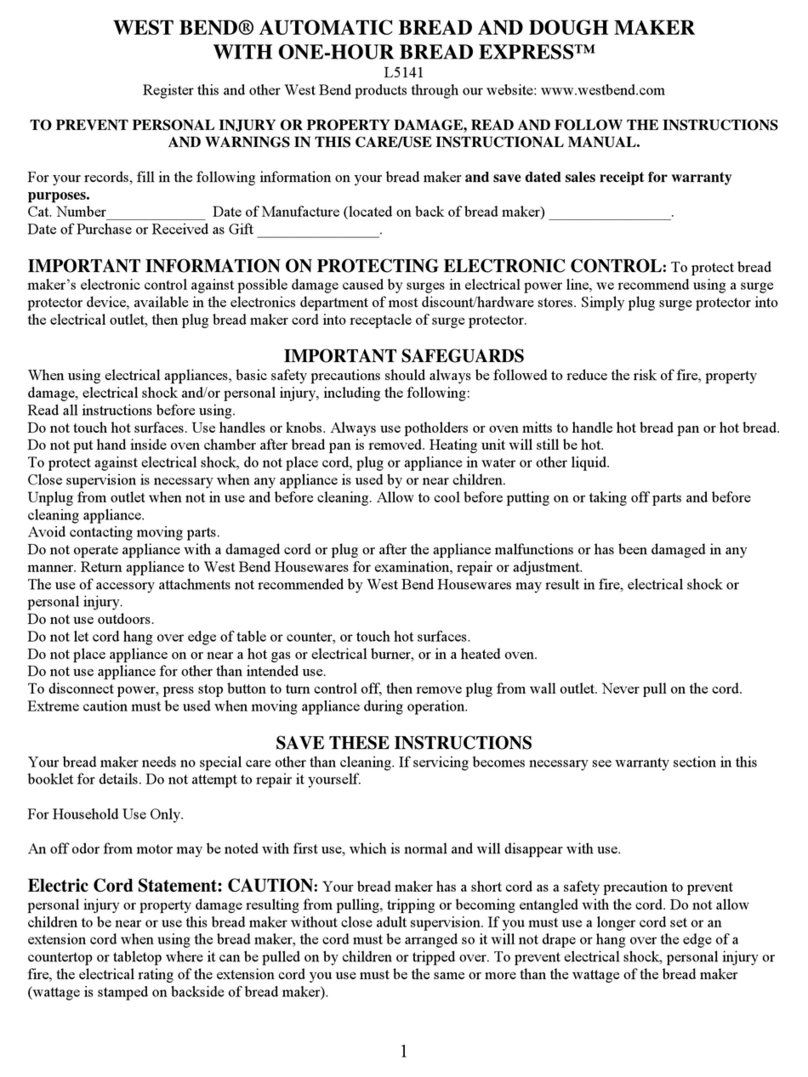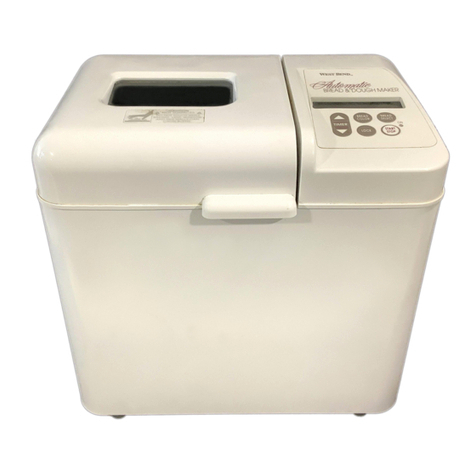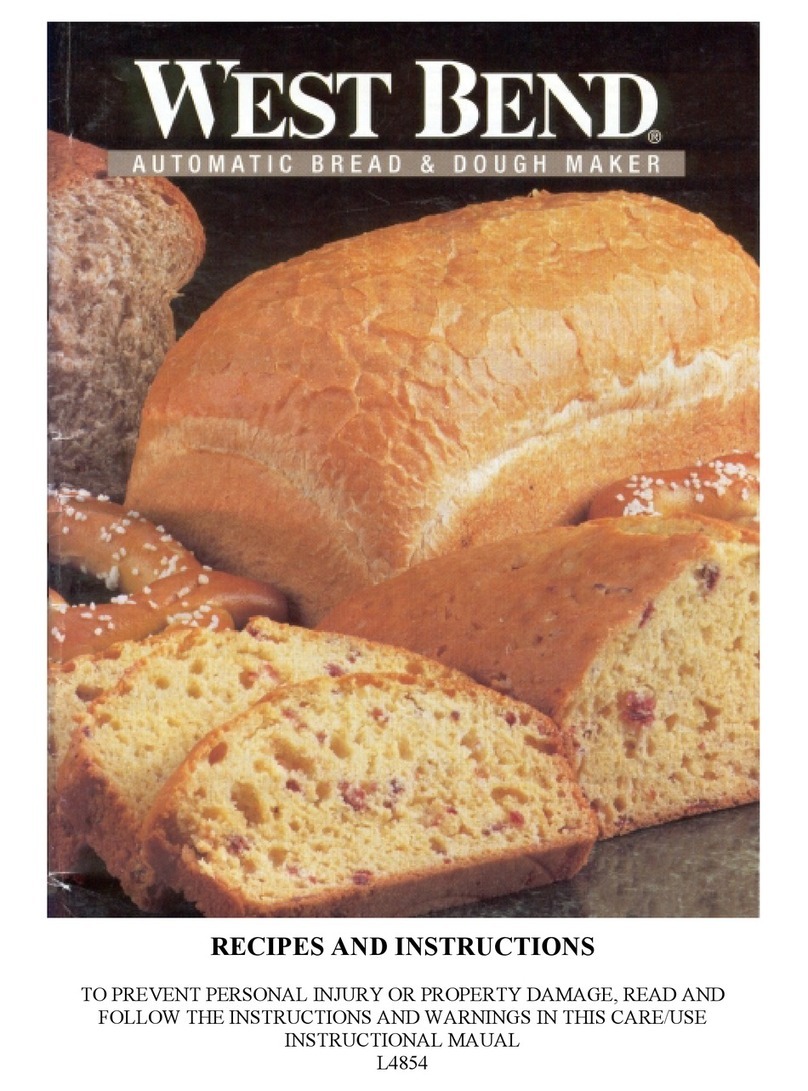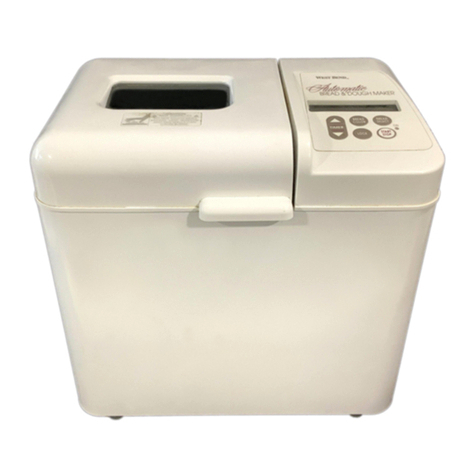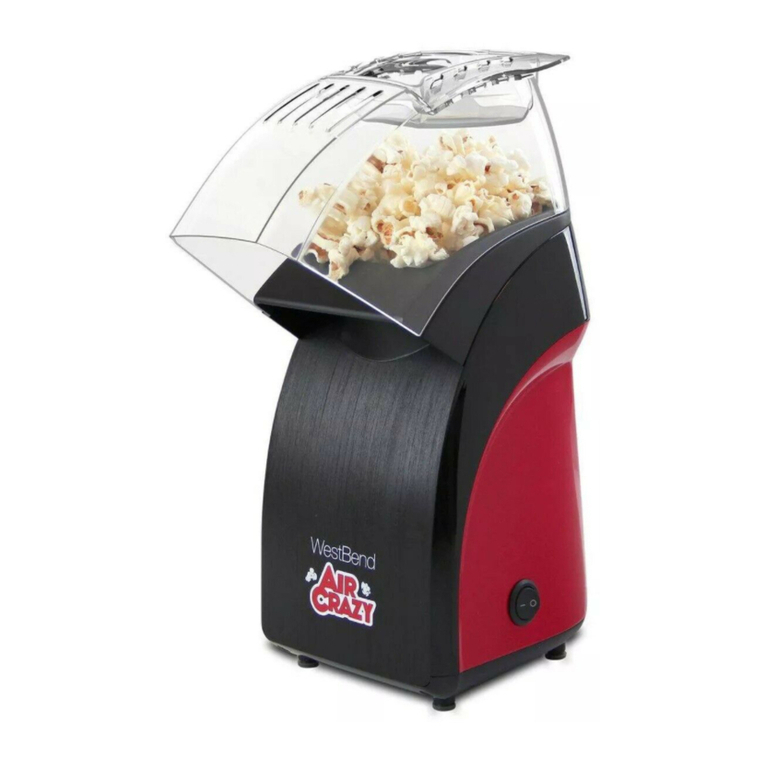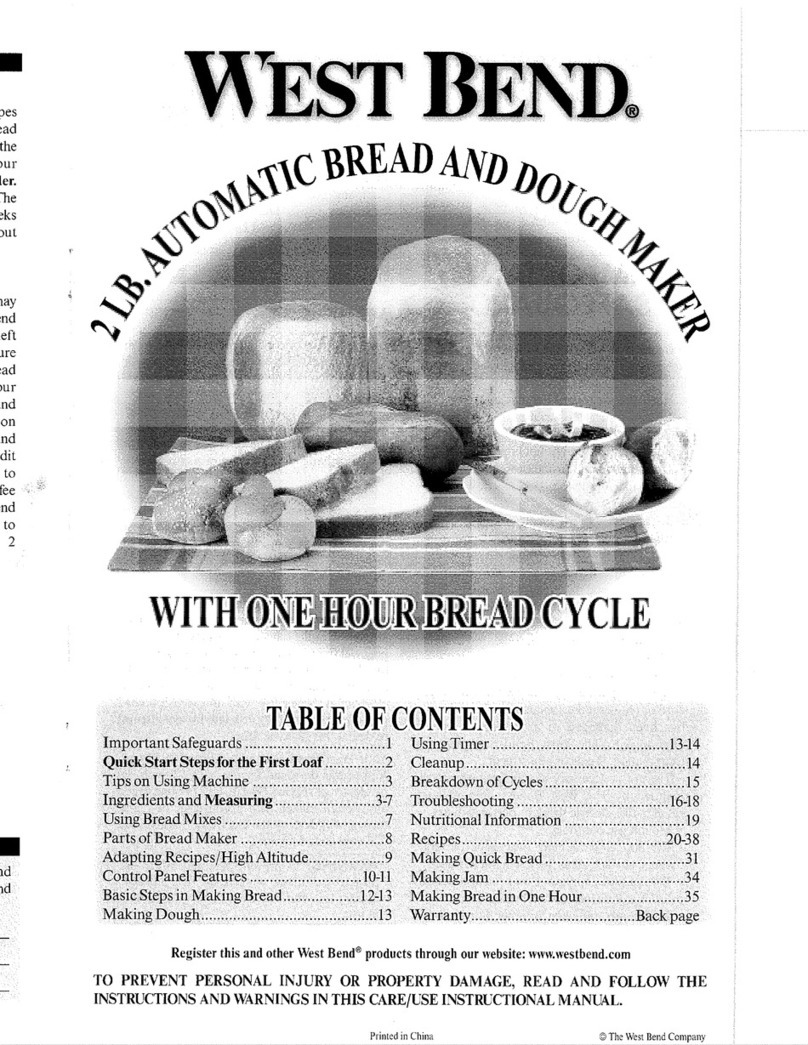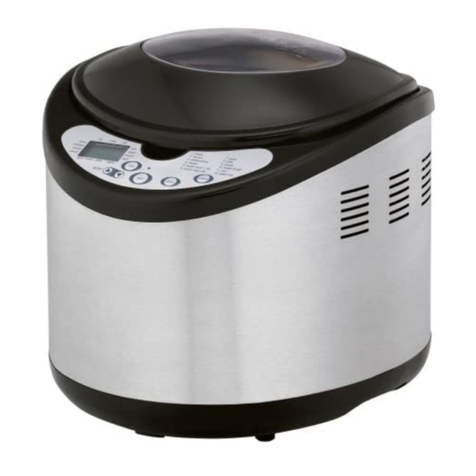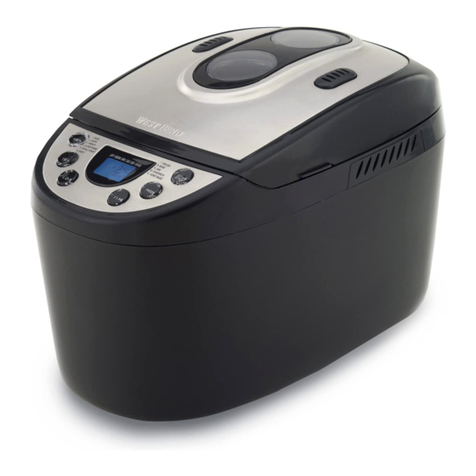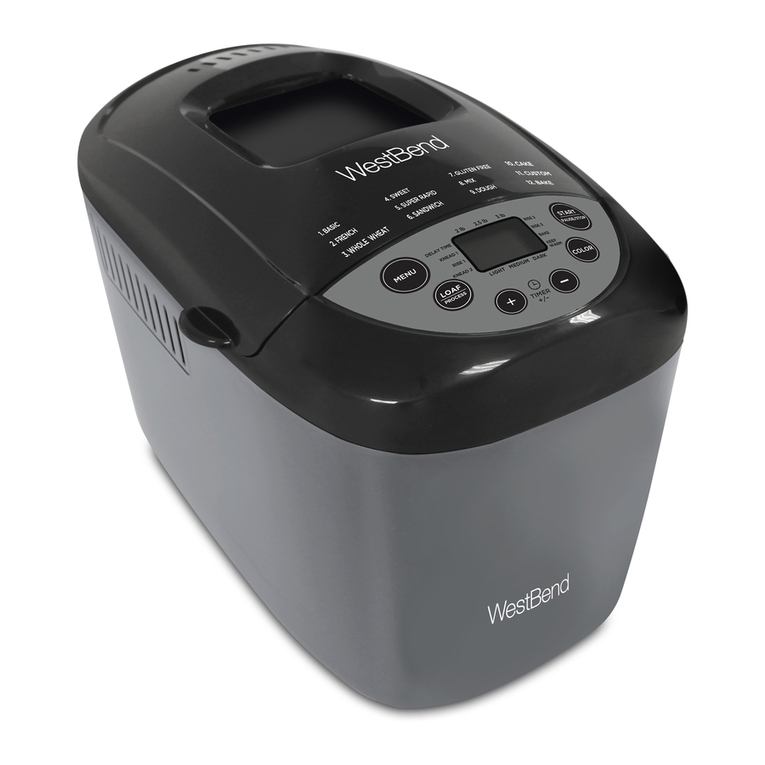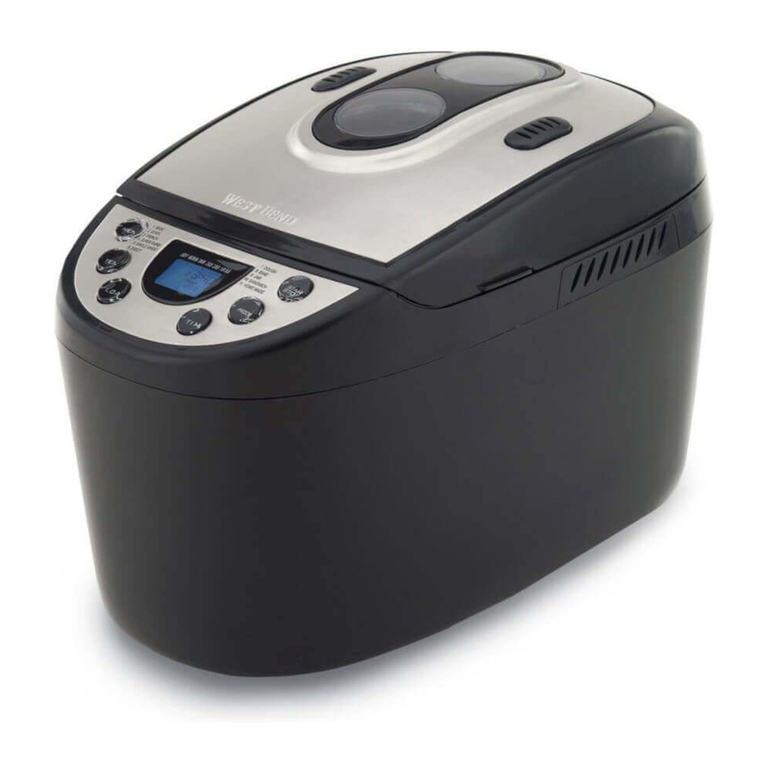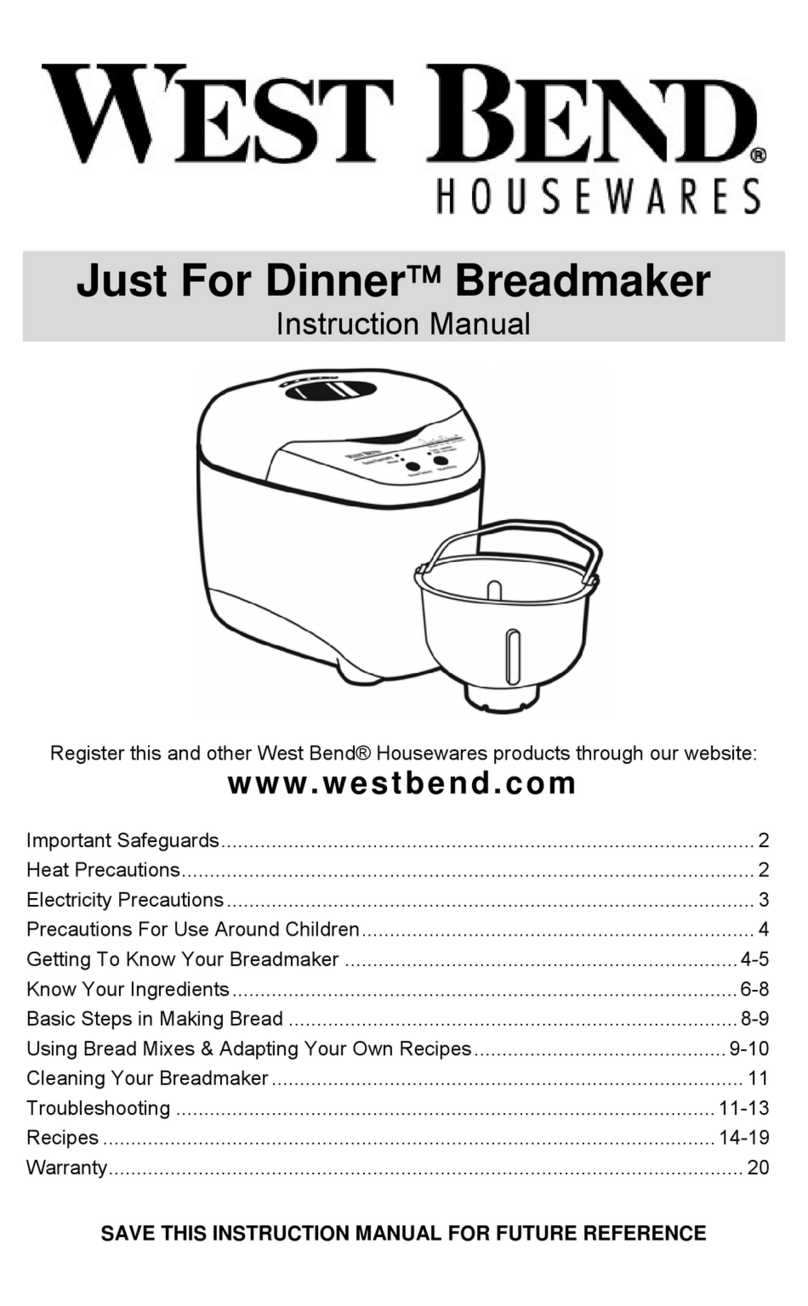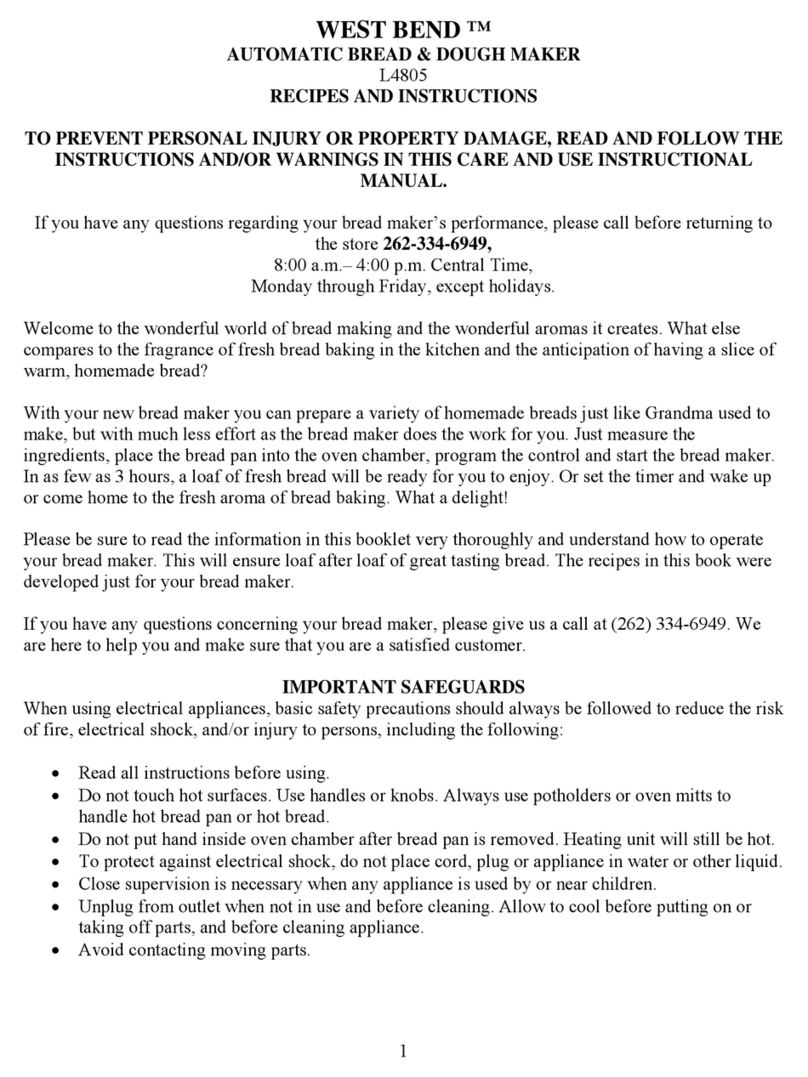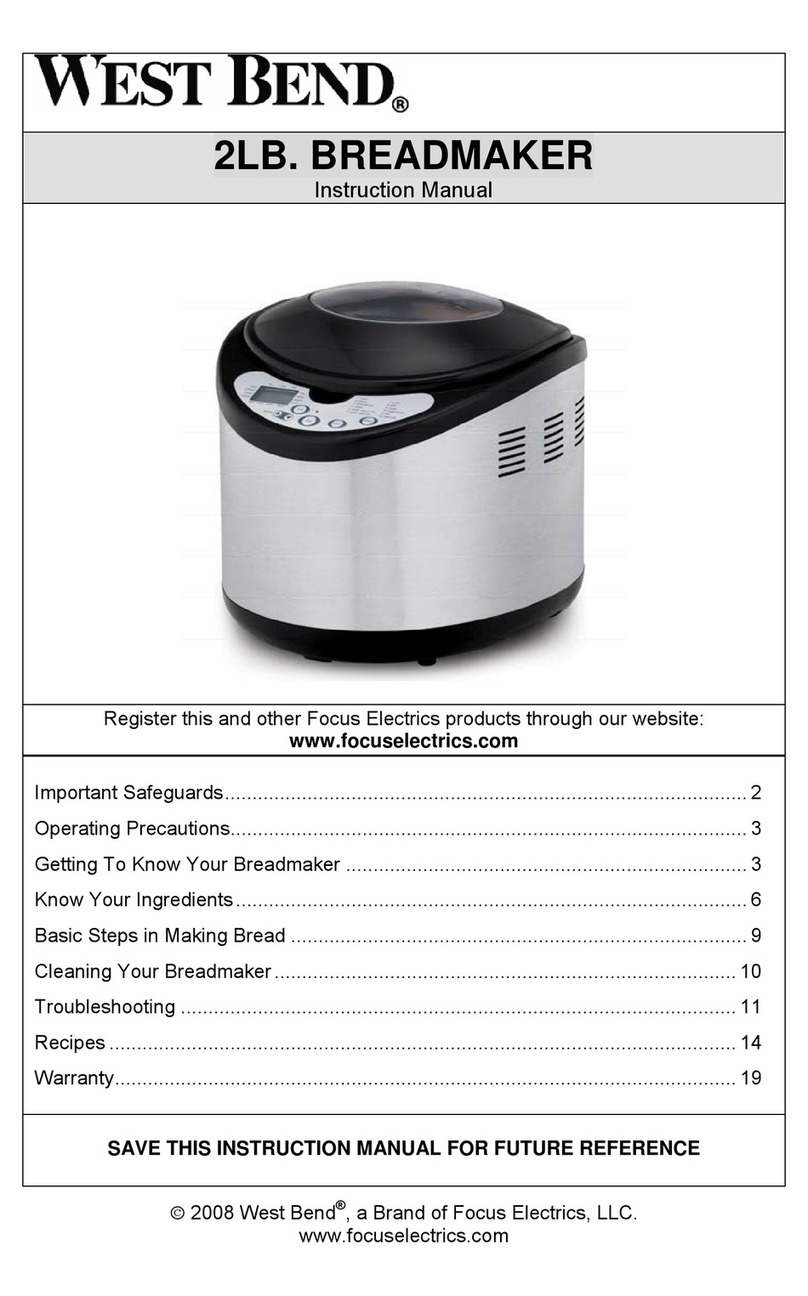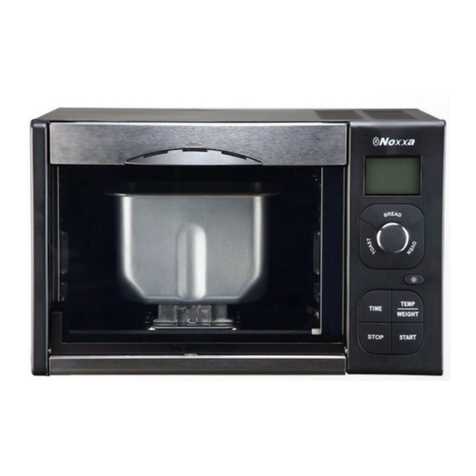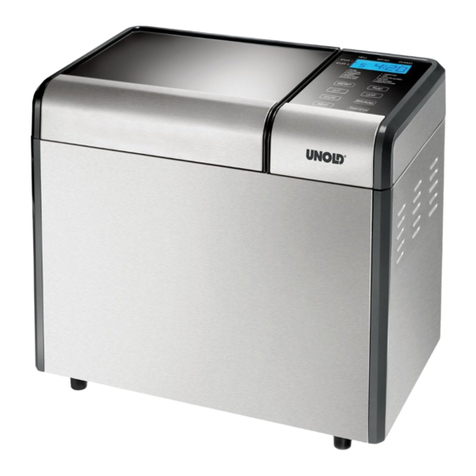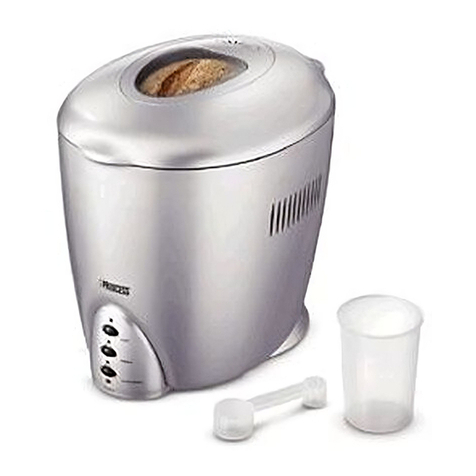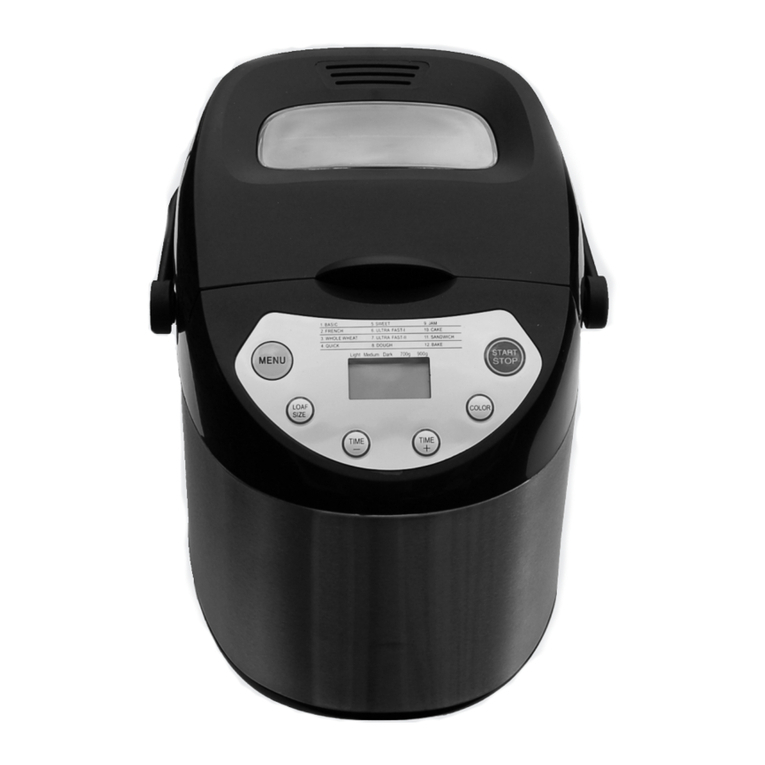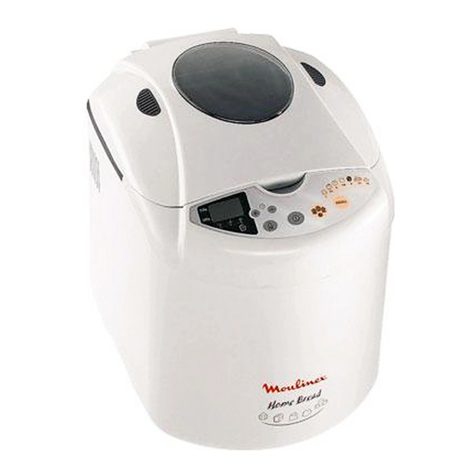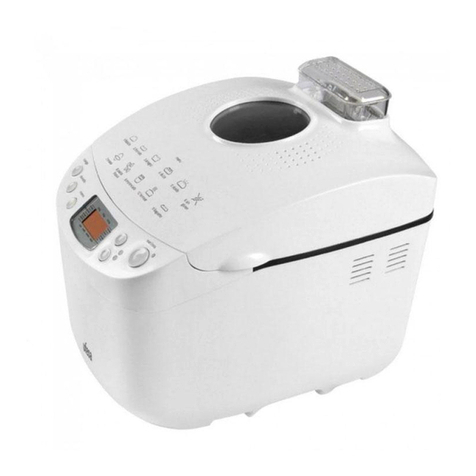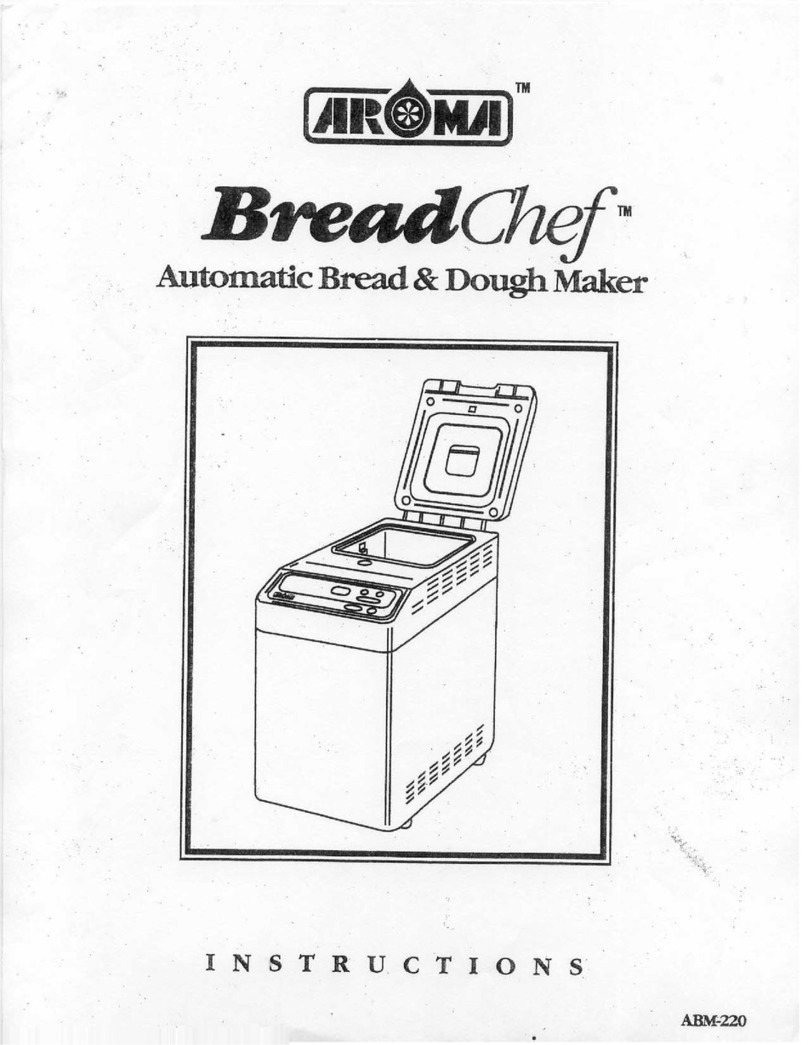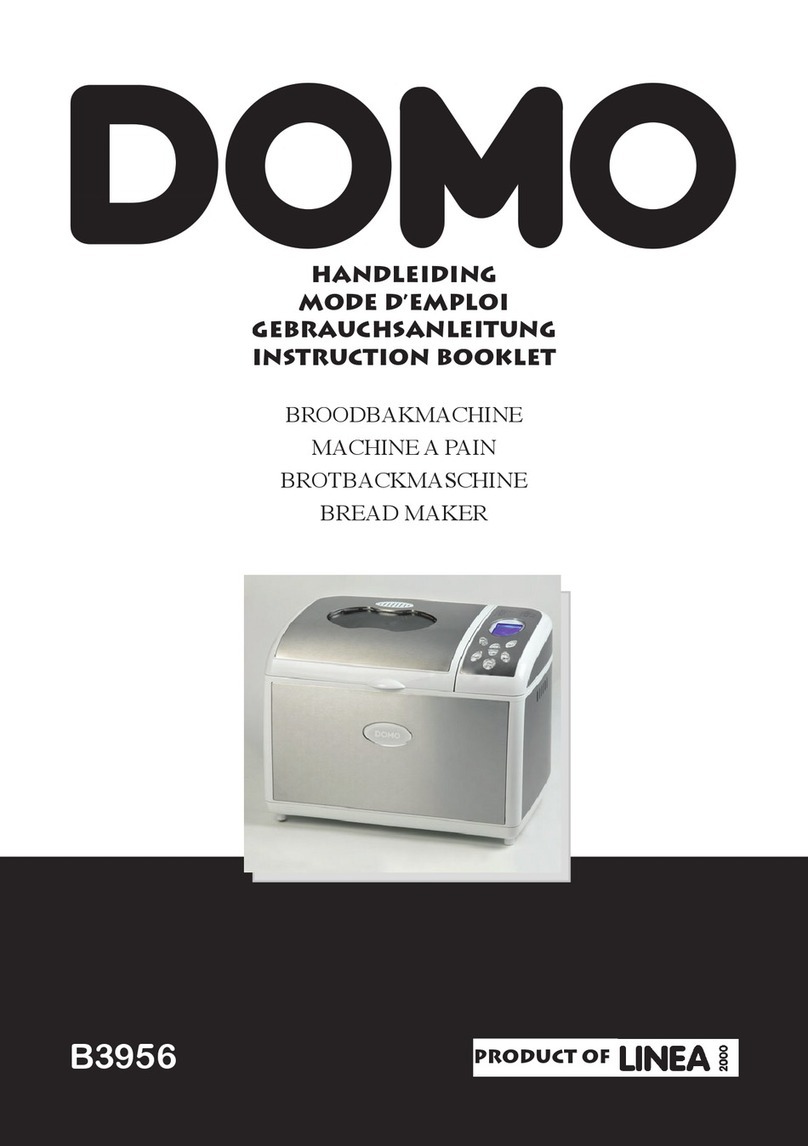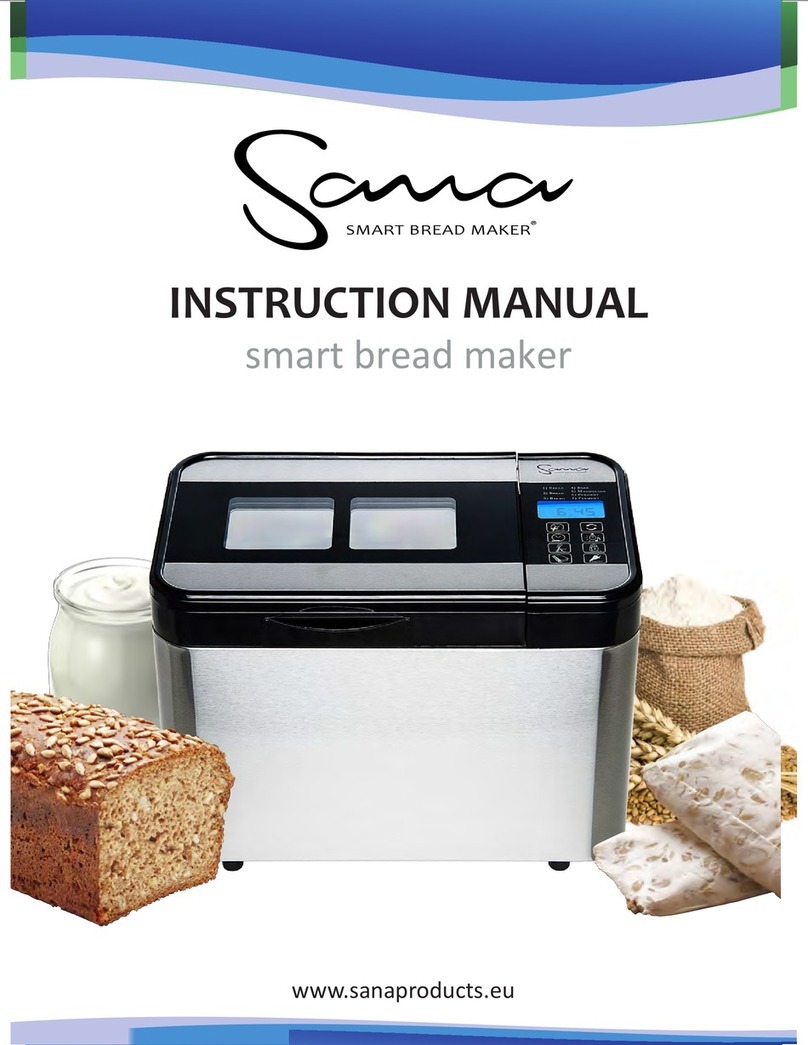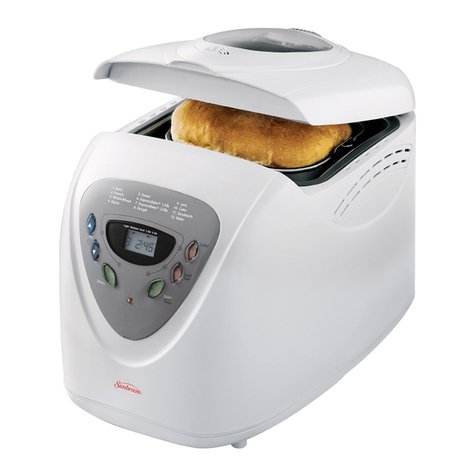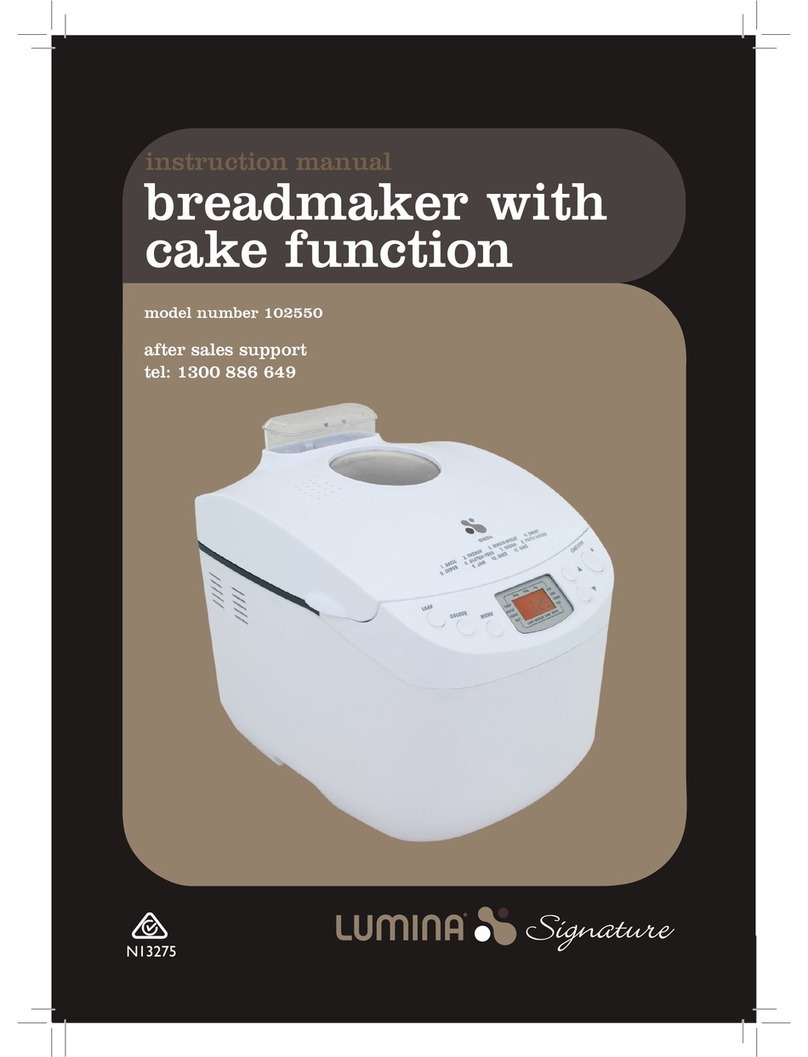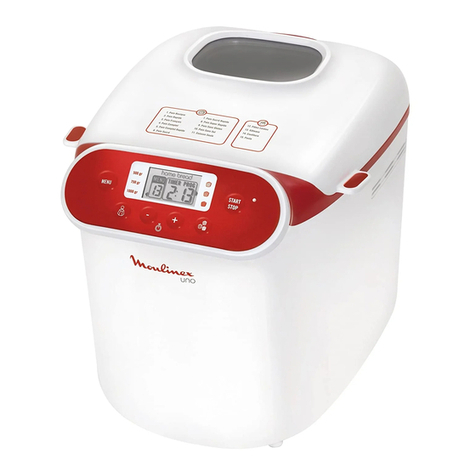English - 8
SUGAR AND OTHER SWEETENERS provide food for the yeast, add height and
flavor to the bread and give the crust a golden color. Types of sweeteners that can
be used include sugar, brown sugar, honey, molasses, maple syrup, corn syrup and
fruits, dried or fresh. Do not use artificial sweeteners as a substitute for sugars and
other natural sweeteners; artificial sweeteners turn bitter when subjected to baking
temperatures, the yeast will not react properly, and poor results will be attained.
When measuring sticky sweeteners, such as honey, coat the measuring spoon with
vegetable oil before measuring the sweetener. This will allow the sweetener to slide
off the spoon without sticking.
MILK enhances flavor and increases the nutritional value of bread. Any type of milk;
dry, whole, 2%, 1%, skim, buttermilk or canned evaporated milk can be used in making
bread. Refrigerated milk may be warmed to 80-90°F (27-32°C) however do not
overheat (above 100°F, 38°C) as this could affect the yeast activity. Do not use regular
milk when using the “Delay Start” function. Use dry milk and water as a substitute.
WATER used in combination with dry milk can be substituted for regular milk and
must be used when using the “Delay Start” function as regular milk can spoil when
left at room temperature for several hours. Use lukewarm water, about 80-90°F (27-
32°C). Do not use water above 100°F (38°C) as this could affect the yeast.
BUTTER, MARGARINE, SHORTENING and OILS serve several purposes in bread
making as they tenderize the bread, add flavor and richness. Butter and margarine
are interchangeable in recipes. Butter and margarine can be used right from the
refrigerator. Cut cold butter or margarine into smaller pieces for faster blending
during the knead cycle. Low-fat or fat-free bread can be made by substituting equal
amounts of unsweetened applesauce or plain yogurt for the amount of fat
recommended in the recipe. Using less fat will affect the height, tenderness and
texture of the bread, which is normal.
EGGS add color, richness and leavening to bread. Use only large eggs. No
premixing is needed. Egg substitutes can be used in place of fresh eggs. One egg
equals ¼ cup of egg substitute. To reduce cholesterol, you can substitute two (2)
egg whites for a large egg in the recipes without affecting the end result. Watch the
dough during the knead cycle as some minor adjustment may be needed to get the
dough to the right consistency.
SALT has several functions in making bread. It controls yeast growth while
strengthening the gluten structure to make the dough more elastic and also adds
flavor. Use ordinary table salt in your bread maker. Using too little or eliminating the
salt will cause the dough to over rise. Using too much can prevent the dough from
rising as high as it should. “Light” salt can be used as a substitute for ordinary table
salt, providing it contains both potassium chloride and sodium. Use the same amount
as recommended for table salt. When adding salt to the bread pan, add to one
corner to keep it away from the yeast, especially when using time delay as the salt
can affect the yeast activity.
YEAST is a living organism, which through fermentation, feeds on carbohydrates in
flour and sugar to produce carbon dioxide gas that makes the bread rise. Active dry,
fast rising or bread machine yeast can be used in your bread maker. Use only the
amount stated in the recipes. Using a little more can cause the dough to over rise
and bake into the top of the bread maker. Fast rising yeast and bread machine yeast
are virtually the same and interchangeable with one another. Do not use
compressed yeast as poor results may be obtained. A ¼-ounce envelope of yeast
contains 2¼ teaspoons. Yeast can also be purchased in bulk so you can measure
the exact amount needed. Once opened, keep refrigerated. Always make sure yeast
is fresh and has not passed the “Use By” date.
